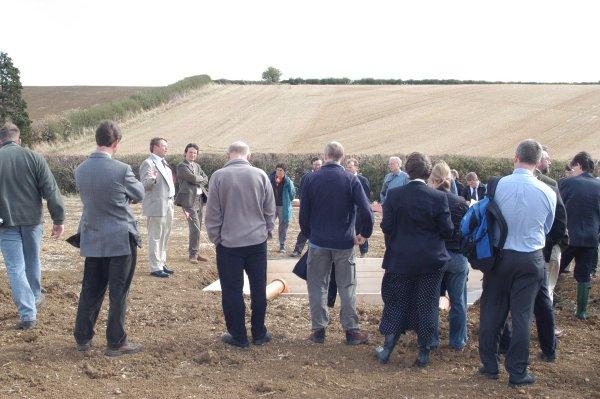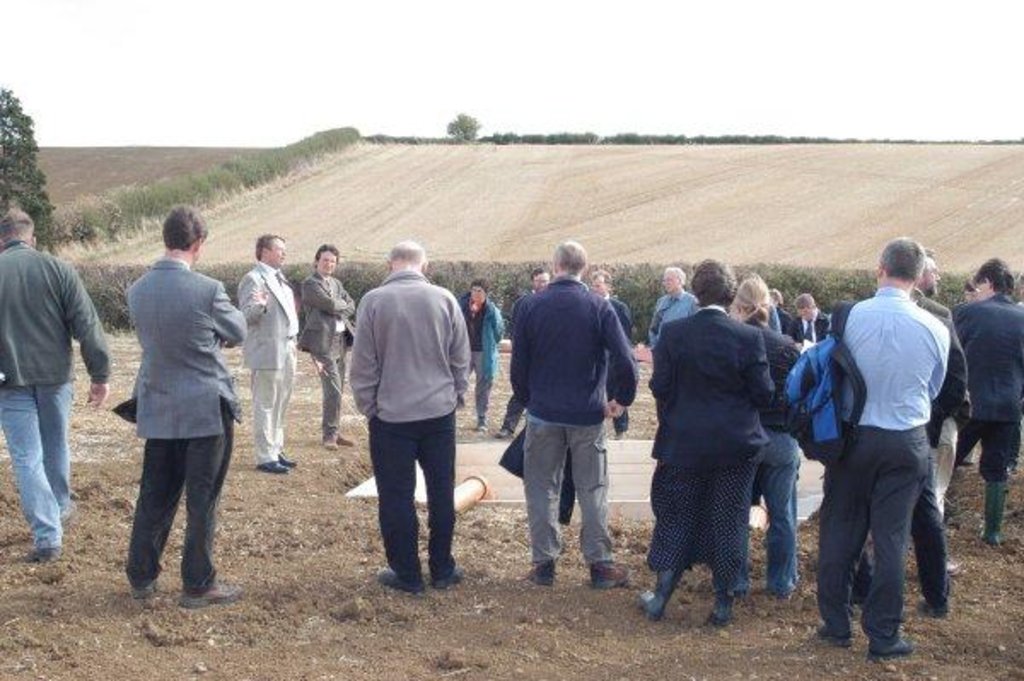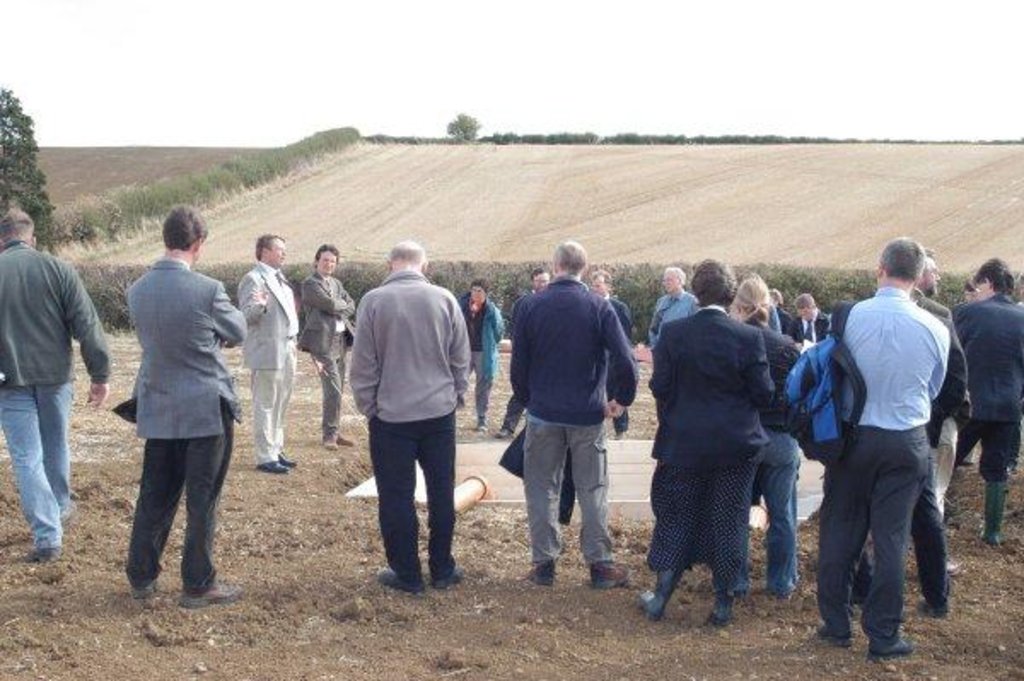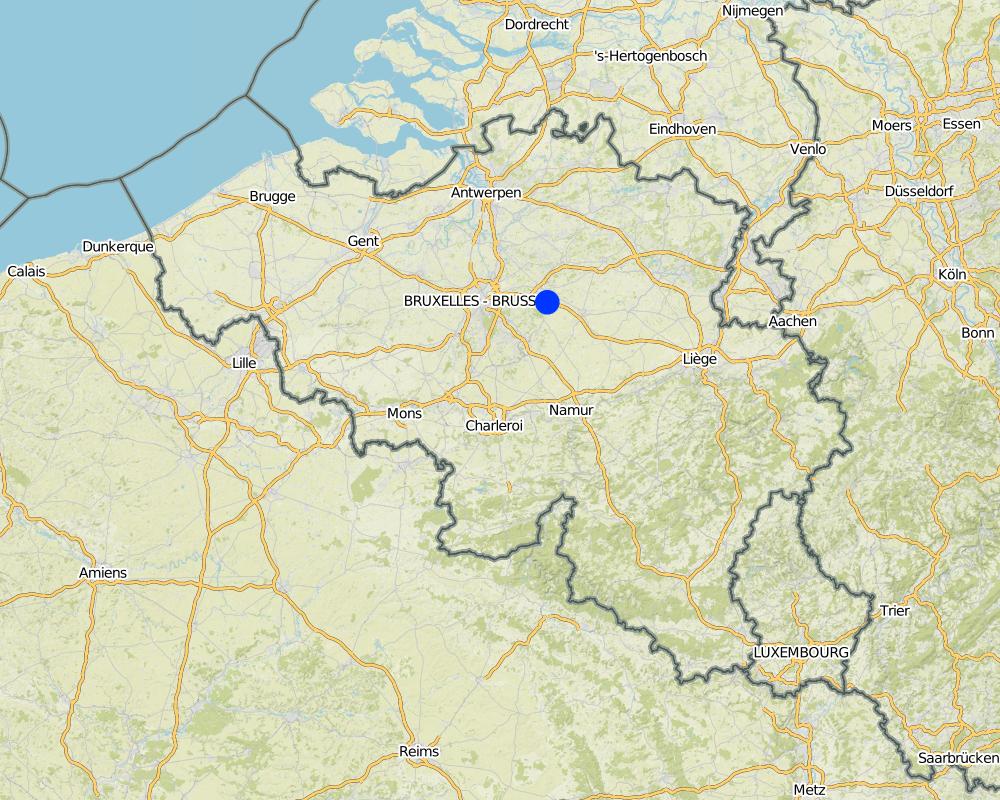Introduction of conservation agriculture in a highly mechanised agricultural system [เบลเยียม]
- ผู้สร้างสรรค์:
- การอัพเดท:
- ผู้รวบรวม: Unknown User
- ผู้เรียบเรียง: –
- ผู้ตรวจสอบ: Fabian Ottiger
approaches_2556 - เบลเยียม
ดูส่วนย่อย
ขยายทั้งหมด ย่อทั้งหมด1. ข้อมูลทั่วไป
1.2 รายละเอียดที่ติดต่อได้ของผู้รวบรวมและองค์กรที่เกี่ยวข้องในการประเมินและการจัดเตรียมทำเอกสารของแนวทาง
วิทยากรหลัก
ผู้เชี่ยวชาญ SLM:
Gillijns Katleen
Cath. University Leuven
Oude Markt 13, 3000 Leuven
เบลเยียม
ผู้เชี่ยวชาญ SLM:
Govers Gerard
gerard.govers@ees.kuleuven.be
Cath. University Leuven
เบลเยียม
ชื่อของโครงการซึ่งอำนวยความสะดวกในการทำเอกสารหรือการประเมินแนวทาง (ถ้าเกี่ยวข้อง)
Soil and water protection (EU-SOWAP)ชื่อของโครงการซึ่งอำนวยความสะดวกในการทำเอกสารหรือการประเมินแนวทาง (ถ้าเกี่ยวข้อง)
Catholic University of Leuven (KU Leuven) - เบลเยียม1.3 เงื่อนไขที่เกี่ยวข้องกับการใช้ข้อมูลที่ได้บันทึกไว้ผ่านทาง WOCAT
ผู้รวบรวมและวิทยากรหลักยอมรับเงื่อนไขเกี่ยวกับการใช้ข้อมูลที่ถูกบันทึกผ่านทาง WOCAT:
ใช่
1.4 การอ้างอิงถึงแบบสอบถามเรื่องเทคโนโลยี SLM
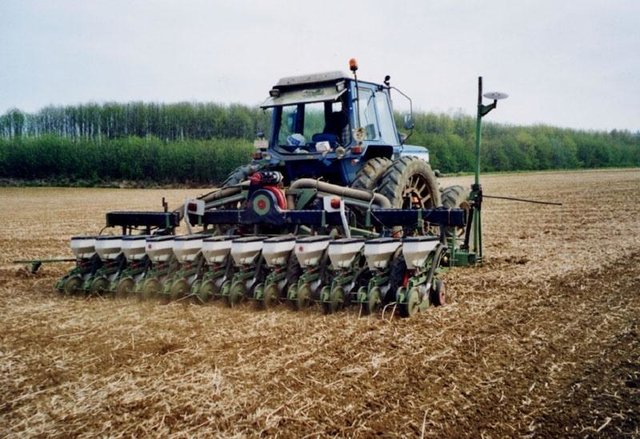
Non-inversion deep cultivation [เบลเยียม]
The technology consists of the use of cover crops and of a non-inversion seedbed preparation.
- ผู้รวบรวม: Unknown User
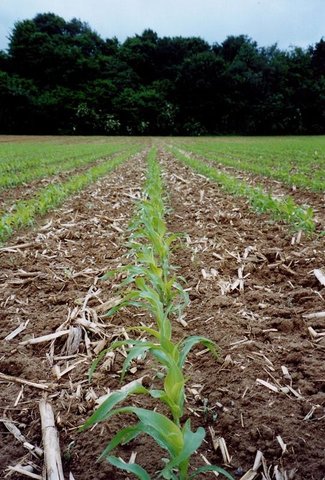
Non-inversion shallow cultivation [เบลเยียม]
The technology consists of the use of cover crops and of a non-inversion seedbed preparation
- ผู้รวบรวม: Unknown User
2. คำอธิบายของแนวทาง SLM
2.1 การอธิบายแบบสั้น ๆ ของแนวทาง
Combination of 'dissemination of the SWC technology 'non-inversion tillage'' and research.
2.2 การอธิบายอย่างละเอียดของแนวทาง
การอธิบายอย่างละเอียดของแนวทาง:
Aims / objectives: To demonstrate the feasibility and stimulate the adaption of conservation tillage to the farmers.
Methods: (1) Collection of scientific data on farmer fields (yield and sediment production) and (2)intensive communication and discussion with farmers. Farmers are involved in the early stages of the project: also the local government and SWC specialists are target groups.
Stages of implementation: The project ( & approach) started in 2001. Every year, data is gathered at +- 15 fields of 10 farmers. The majority of the farmers have a positive attitude towards the approach. There is cooperation with other projects and with research institutes in the U.K. and Hungary. (They are working on the same project).
Other important information: Several times a year the information is communicated to other farmers through field visits and media.
2.3 รูปภาพของแนวทาง
2.5 ประเทศ ภูมิภาค หรือสถานที่ตั้งที่ได้นำแนวทางไปใช้
ประเทศ:
เบลเยียม
ข้อมูลเฉพาะเพิ่มเติมของสถานที่ตั้ง:
Flanders
Map
×2.6 วันที่เริ่มต้นและสิ้นสุดของแนวทาง
ระบุปีที่เริ่ม:
2001
การสิ้นสุดลง (ถ้าแนวทางไม่ได้ใช้อีกต่อไป):
2006
2.7 ประเภทของแนวทาง
- ใช้โครงงานหรือแผนงานเป็นฐาน
2.8 เป้าหมายหรือวัตถุประสงค์หลักของแนวทาง
The Approach focused on SLM only
to overcome the problems listed in QA2.1.3.3 and to demonstrate (see question 2.1.1.2)
The SLM Approach addressed the following problems: Insufficient knwoledge on the SWC technology and their impact on ecology and economy.
2.9 เงื่อนไขที่เอื้ออำนวยหรือเป็นอุปสรรคต่อการนำเทคโนโลยีภายใต้แนวทางนี้ไปปฏิบัติใช้
บรรทัดฐานและค่านิยมทางสังคม วัฒนธรรม ศาสนา
- เป็นอุปสรรค
fields are not 'clean', lack of knowledge of the technology
Treatment through the SLM Approach: demonstrating the benefits of the SWC technology
การมีไว้ให้หรือการเข้าถึงแหล่งการเงินและบริการ
- เป็นอุปสรรค
benefits can only be seen in the long term, farmers are afraid that the yields will be less
Treatment through the SLM Approach: making a cost-benefit analysis, sharing the risk with the farmer
ความรู้เกี่ยวกับ SLM การเข้าถึงการสนับสนุนด้านเทคนิค
- เป็นอุปสรรค
for some operations special machinery is needed
Treatment through the SLM Approach: working together with other farmers with agricultural contractors
3. การมีส่วนร่วมและบทบาทของผู้มีส่วนได้ส่วนเสียที่เกี่ยวข้อง
3.1 ผู้มีส่วนได้ส่วนเสียที่เกี่ยวข้องในแนวทางนี้และบทบาท
- ผู้ใช้ที่ดินระดับท้องถิ่นหรือชุมชนระดับท้องถิ่น
Working land users were mainly men (Most of the farmers in Belgium are men.)
- ผู้เชี่ยวชาญ SLM หรือที่ปรึกษาการเกษตร
- นักวิจัย
3.2 การเกี่ยวข้องของผู้ใช้ที่ดินระดับท้องถิ่นหรือชุมชนระดับท้องถิ่นในช่วงต่างๆของแนวทาง
| ความเกี่ยวข้องของผู้ใช้ที่ดินระดับท้องถิ่นหรือชุมชนระดับท้องถิ่น | ระบุผู้ที่มีส่วนเกี่ยวข้องและอธิบายกิจกรรม | |
|---|---|---|
| การริเริ่มหรือการจูงใจ | ไม่มี | workshops/seminars; The aims and planning of the project were discussed with a small group of farmers. |
| การวางแผน | ไม่มี | workshops/seminars; idem |
| การดำเนินการ | ไม่มี | responsibility for major steps; Farmers were implementing the new SCW technology with advice from researchers. |
| การติดตามตรวจสอบหรือการประเมินผล | ไม่มี | public meetings; Pro's and contra's of the technology is duscussed with farmers. |
| Research | ไม่มี | Farmers are informed about the obtained research results. |
3.4 การตัดสินใจเลือกใช้เทคโนโลยี SLM
ระบุผู้ที่ทำการตัดสินใจเลือกเทคโนโลยีมากกว่าหนึ่งวิธีไปปฏิบัติใช้:
- ผู้ใช้ที่ดินเป็นผู้ตัดสินใจหลัก โดยการสนับสนุนจากผู้เชี่ยวชาญ SLM
การอธิบาย:
Decisions on the method of implementing the SLM Technology were made by mainly by land users supported by SLM specialists
4. การสนับสนุนด้านเทคนิค การสร้างขีดความสามารถ และการจัดการด้านความรู้
4.1 การสร้างขีดความสามารถ / การอบรม
ได้มีการจัดอบรมให้แก่ผู้ใช้ที่ดินหรือผู้มีส่วนได้ส่วนเสียคนอื่น ๆ หรือไม่:
ใช่
ให้ระบุว่าใครเป็นผู้ได้รับการอบรม:
- ผู้ใช้ที่ดิน
- SWC specialists, planners
รูปแบบการอบรม:
- กำลังดำเนินการ
- เกษตรกรกับเกษตรกร
- ใช้พื้นที่ทำการสาธิต
- จัดการประชุมสู่สาธารณชน
หัวข้อที่พูด:
problems of soil erosion - practical issues about new technology.
4.2 การบริการให้คำแนะนำ
ผู้ใช้ที่ดินมีการเข้าถึงการรับบริการให้คำปรึกษาหรือไม่:
ใช่
4.3 การเสริมความแข็งแกร่งให้กับสถาบัน (การพัฒนาองค์กร)
สถาบันได้รับการจัดตั้งขึ้นมาหรือเสริมความแข็งแกร่งโดยแนวทางนี้หรือไม่:
- ไม่
4.4 การติดตามตรวจสอบและประเมินผล
การติดตามตรวจสอบและประเมินผลเป็นส่วนหนึ่งของแนวทางหรือไม่:
ใช่
ความคิดเห็น:
bio-physical aspects were regular monitored through measurements
technical aspects were ad hoc monitored through observations
economic / production aspects were regular monitored through measurements; indicators
no. of land users involved aspects were ad hoc monitored through measurements
There were no changes in the Approach as a result of monitoring and evaluation
4.5 การวิจัย
การวิจัยเป็นส่วนหนึ่งของแนวทางหรือไม่:
ใช่
ระบุหัวข้อเรื่อง:
- เศรษฐศาสตร์หรือการตลาด
- นิเวศวิทยา
ให้ข้อมูลเพิ่มเติมและให้ระบุผู้ทำการวิจัย:
Collection of scientific data on farmer yields (yield and sediment production). This information is afterwards communicated to the farmers.
Research was carried out on-farm
5. การสนับสนุนด้านการเงินและวัสดุอุปกรณ์
5.1 ระบุงบประมาณประจำปีสำหรับแนวทาง SLM นี้
แสดงความคิดเห็น (แหล่งของการระดมทุน ผู้บริจาคคนสำคัญ):
Approach costs were met by the following donors: international (EU-LIFE): 50.0%; other (SYNGENTA): 50.0%
5.3 เงินสนับสนุนสำหรับปัจจัยนำเข้า (รวมถึงแรงงาน)
- ไม่มี
ถ้าแรงงานโดยผู้ใช้ที่ดินเป็นปัจจัยนำเข้าที่มีอยู่มากมาย ระบุด้วยว่าเนื่องจาก:
- จ่ายเป็นเงินสด
ความคิดเห็น:
Farmers were asked to split up a field: one part was conventional tilled and on the other part the SWC technology was applied. Farmers were paid for the extra work of splitting a field.
5.4 เครดิต
มีการจัดหาเครดิตมาให้ภายใต้แนวทาง SLM หรือไม่:
ไม่ใช่
6. การวิเคราะห์ผลกระทบและการสรุป
6.1 ผลกระทบของแนวทาง
ช่วยให้ผู้ใช้ที่ดินนำเอาเทคโนโลยี SLMไปใช้และบำรุงรักษาสภาพไว้ได้หรือไม่:
- ไม่ใช่
- ใช่ เล็กน้อย
- ใช่ ปานกลาง
- ใช่ อย่างมาก
Less soil is eroded through implementation of the QT.
There are no strong land use rights.
Did other land users / projects adopt the Approach?
- ไม่ใช่
- ใช่ เล็กน้อย
- ใช่ ปานกลาง
- ใช่ อย่างมาก
Some other projects in Belgium were setup with the same approach.
6.3 ความยั่งยืนของกิจกรรมของแนวทาง
ผู้ใช้ที่ดินสามารถทำให้สิ่งต่างๆ ที่ได้ปฏิบัติใช้โดยแนวทางนี้ยั่งยืนได้หรือไม่ (โดยไม่มีการสนับสนุนจากภายนอก):
- ใช่
6.4 จุดแข็งและข้อได้เปรียบของแนวทาง
| จุดแข็ง / ข้อได้เปรียบของแนวทางในทัศนคติของผู้รวบรวมหรือวิทยากรหลัก |
|---|
| The combination of scientific research and direct interaction with farmers is a promising strategy to stimulate the adoption of conservation tillage. |
7. การอ้างอิงและการเชื่อมต่อ
7.1 วิธีการหรือแหล่งข้อมูล
- ไปเยี่ยมชมภาคสนาม การสำรวจพื้นที่ภาคสนาม
- การสัมภาษณ์กับผู้ใช้ที่ดิน
7.2 การอ้างอิงถึงสิ่งตีพิมพ์
ชื่อเรื่อง ผู้เขียน ปี ISBN:
SOWAP - project 2003-2006
ช่องทางในการสืบค้น และราคา:
www.sowap.org
ลิงก์และโมดูล
ขยายทั้งหมด ย่อทั้งหมดลิงก์

Non-inversion deep cultivation [เบลเยียม]
The technology consists of the use of cover crops and of a non-inversion seedbed preparation.
- ผู้รวบรวม: Unknown User

Non-inversion shallow cultivation [เบลเยียม]
The technology consists of the use of cover crops and of a non-inversion seedbed preparation
- ผู้รวบรวม: Unknown User
โมดูล
ไม่มีโมดูล


